The only sensible way to deal with pointers is to draw diagrams. If pointer variable p contains the address of x, then we say that p points to x, and we show an arrow from p to x.
Let's simulate the following pointless sequence of statements just for practice. For reference, the lines are numbered.
1. int x = 40; 2. int y = 24; 3. int* p = &x; 4. int* q = &y; 5. int* r = q; 6. q = p; 7. *r = *q; 8. *p = 55; 9. p = r;
The following diagram shows the variables after the first 5 lines.
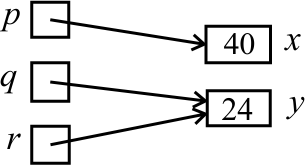
After line 6, the pointer stored in p is copied into q, making q point to the same place as p.
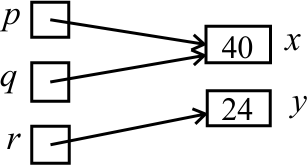
Line 7 sets *r (currently the same as y) to hold the same value as in *q (currently x).
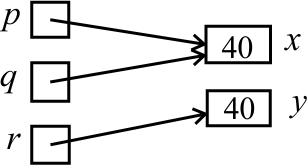
Line 8 sets *p (currently the same as x) to hold 55.
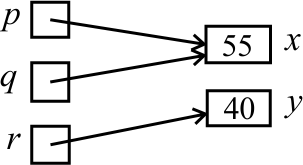
Line 9 copies the pointer in r (which currently points to y) into pointer variable p, making p also point to y.
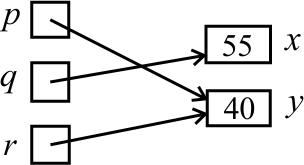
You should be able to draw your own pointer diagrams and hand simulate a sequence of statements like the ones just done. The most important thing is: Don't cut corners. Draw your pointer diagrams carefully. Never try to hand-simulate pointer operations in your head. You will miss important details.
Understanding pointers requires drawing pointer diagrams. Do not try to keep pointer diagrams in your head.
What is the value of variable x after performing the following sequence of statements?
int x = 50; int* p = &x; *p = 4;Answer
What is the value of x after doing
int y = 7; int x = 35; int* p = &x; p = &y;Answer
What is the value of variable x after performing the following sequence of statements?
int x = 20; int y = 41; int z = 60; int* p = &x; int* q = &y; int* r = &z; *r = *q; q = p; *q = *r;Answer